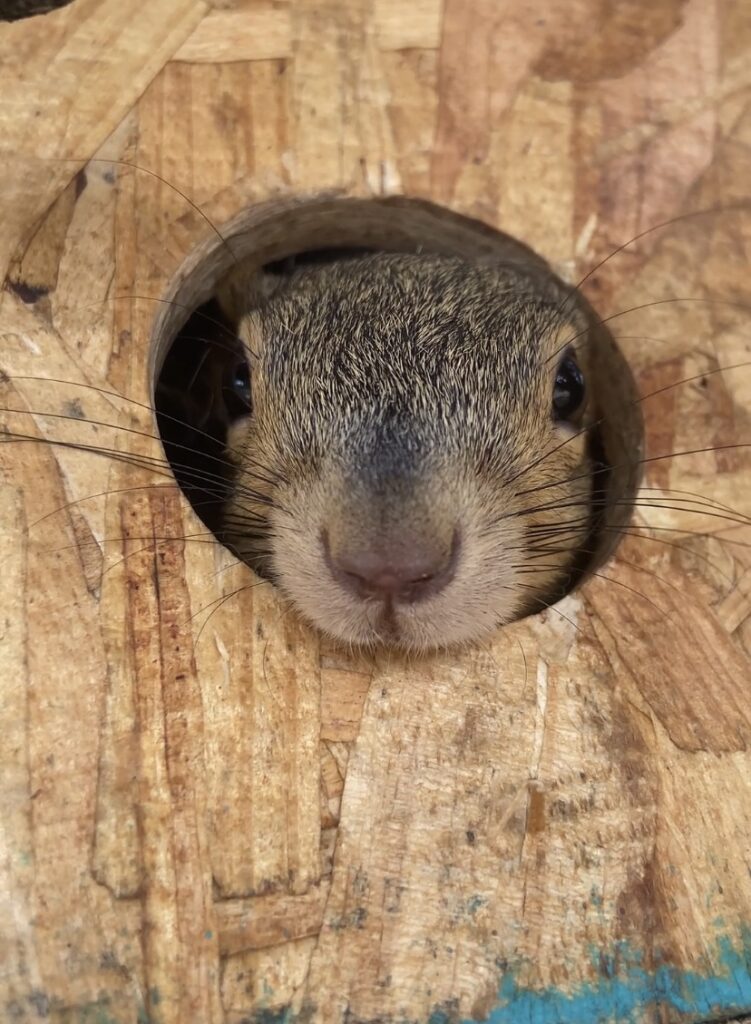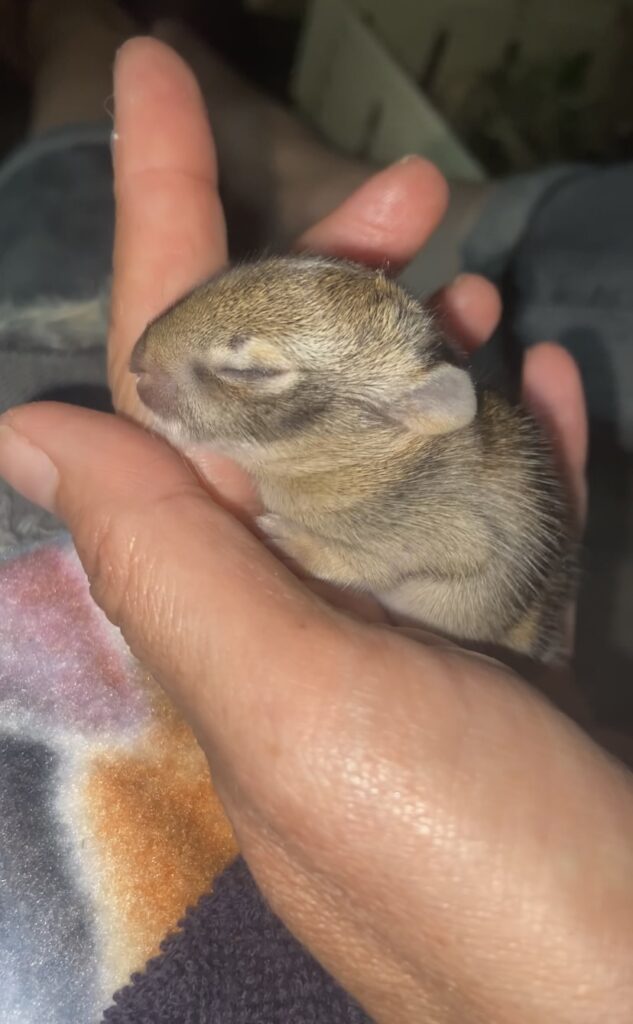Squirrel (Sciurus carolinensis) Identification · Gray to brownish fur with white underside · Dark claws · Bushy tail · Diurnal Omnivore Diet · Nuts, berries, buds, fruit, fungi, roots, · Hoard and bury nuts · Stash food in thousands of caches each year · Have excellent spatial memory and use landmarks to locate caches · Tail plays a role in communication as well. · Agile and speedy climbers, adept jumpers. Depends on tail for balance. · Give birth twice per year: early spring & late summer (usually February & August) · Average 3 to 4 offspring per litter · No paternal care · Mother will move nest or carry young back to nest if disturbed.

Eastern Cottontail (Sylvilagus floridanus) Identification · Medium to large-sized rabbit · Long ears · Long and dense brown/gray fur with a white underside · Young often have a white mark on forehead that is absent in older individuals · White, cotton ball like tail from which its name is derived Diet · Primarily eats grasses and forbs when available, but will consume woody perennials during winter when food is scarce. Behavior · Solitary, except when mating · Relies on sight and hearing to detect predators · If threatened, will use quick bursts of speed to dart toward cover. · Breeding season is February –September · Average litter size: 3-6, litters per year · Mother will only nurse infants at dawn and dusk · No paternal care · Independent at about 3 weeks old.

Virginia Opossum ( Didelphis virginiana) Identification · House cat sized marsupial · Long head with a nose that ends in a point with rounded, hairless, black ears · Long, semi-prehensile tail · Five toes on each foot (opposable toe on hind feet) · Body covered in thick undercoat of fur with long coarse hair* Lifespan: Average life expectancy 1.33 years, but can be up to 3 years in the wild. Habitat · Variety of habitats · Found in woodlands and farmland but can also be found in wet areas such as swamps and suburban areas · Shelters in old dens, beneath buildings, in hollowed trees or logs, brush piles Diet · Opportunistic omnivores · Eats fruits, vegetables, nuts, eggs, carrion, insects, small mammals and reptiles Behavior · Primarily active at night. · May “play dead” near potential predators. Behavior includes emitting foul smell, tongue sticking out, eyes half closed · Solitary · Nomadic * solely maternal care of young · 2-3 Litters/Year with average number of 7 or 8 but can have as many as 13 · Young are born from January to September · Babies are born the size of a honeybee inside of a female’s birth canal where they must crawl to the pouch and attached to a nipple. Twelve nipples are arranged in a circle with one in the middle. · Infants stay in the pouch for two months before they crawl out and “ride” on top of mother by gripping her fur while she searches for food · Babies were weaned at three months and independent around the age of four months.
White-tailed Deer Identification: White-tailed deer, scientifically classified as Cervidae, are elegant creatures known for their distinctive tail that flashes a brilliant white when raised. Adult males, known as bucks, boast impressive antlers, while females, or does, exhibit grace and agility. The reddish-brown coat of fur is a common f eature, with white markings on the throat, belly, and the underside of the tail.
Lifespan: The lifespan of a white-tailed deer in the wild can vary, but on average, they live between 4 to 6 years. Their survival is influenced by factors such as predation, disease, and environmental conditions.
Diet: White-tailed deer are herbivores with a diverse diet. Their menu includes leaves, twigs, fruits, nuts, and grass. In winter, when fresh vegetation is scarce, they adapt by consuming bark and woody stems. The ability to switch their diet based on seasonal availability contributes to their resilience in various ecosystems.
Babies (Fawns): White-tailed deer give birth to adorable spotted fawns in late spring to early summer. Fawns are typically left concealed by their mothers in tall grass or vegetation, a strategy to protect them from predators. Unlike many mammals, fawns lack a strong scent, reducing the risk of detection by predators.
Behavior: White-tailed deer exhibit fascinating behaviors that contribute to their survival:
- Alertness: Known for their keen senses, white-tailed deer are vigilant and quick to detect potential threats. Their large ears and eyes, coupled with acute sense of smell, make them adept at evading predators.
- Social Structure: White-tailed deer are social animals, forming family groups led by a dominant doe. During certain seasons, males may form bachelor groups, while territorial behavior is more pronounced during the mating season, or rut.
- Mating Rituals: The rut involves intricate mating rituals where bucks engage in vocalizations and physical displays to establish dominance and attract mates. This period is characterized by increased activity and, for the bucks, the impressive clash of antlers.
